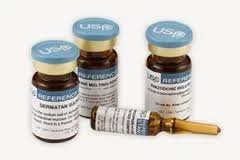Standardization and Calibration of Dissolution Test.

Standardization and Calibration of Dissolution Test Equipment is a critical aspect of pharmaceutical quality control. It ensures that drug dissolution tests are accurate, consistent, and compliant with regulatory standards such as those set by the United States Pharmacopeia (USP), European Pharmacopoeia (Ph. Eur.), and other global agencies. Here’s a detailed explanation of the topic:
1. Introduction
Dissolution testing is used to measure the rate at which an active pharmaceutical ingredient (API) is released from its dosage form (like tablets or capsules) into a solution. This test simulates the drug’s behavior in the gastrointestinal tract and is vital for assessing product quality, bioequivalence, and stability.
However, for dissolution results to be valid and comparable across batches or labs, standardization and calibration of the equipment used in testing are essential.
2. What is Standardization?
Standardization refers to the process of establishing consistent procedures, equipment specifications, and operational conditions for conducting dissolution tests.
Key Elements of Standardization:
-
Use of compendial apparatus: USP Apparatus 1 (basket), 2 (paddle), 3 (reciprocating cylinder), etc.
-
Defined test conditions: Medium volume, pH, agitation speed, temperature (usually 37±0.5°C).
-
Standard operating procedures (SOPs) for dissolution test execution.
-
Regulatory alignment: Following guidelines set by USP, FDA, EMA, etc.
3. What is Calibration?
Calibration is the process of verifying and adjusting the accuracy of an instrument to ensure it performs within specified tolerances. In dissolution testing, calibration ensures that the equipment functions as intended and produces reliable results.
Types of Calibration:
-
Mechanical Calibration: Verifies physical parameters like shaft centering, paddle height, vessel alignment, and wobble.
-
Temperature Calibration: Ensures the water bath or media is maintained at the correct temperature (usually 37°C).
-
RPM Calibration: Confirms the rotational speed of the paddles or baskets.
-
Time Calibration: Checks the accuracy of the test timer.
-
Performance Verification Testing (PVT): Uses USP reference standards (calibrators) to assess the overall performance of the apparatus under actual test conditions.
4. Importance of Standardization and Calibration
-
Accuracy and Precision: Ensures that dissolution results reflect true drug release.
-
Reproducibility: Allows for consistent results across multiple tests and laboratories.
-
Regulatory Compliance: Calibration is a requirement for Good Manufacturing Practice (GMP) and quality assurance.
-
Product Quality Assurance: Prevents false results that could lead to product recalls or failures.
5. Calibration Frequency
-
Daily Checks: Temperature, media volume, and basic equipment status.
-
Monthly/Quarterly: Mechanical and RPM calibrations.
-
Annually: Full system calibration including PVT using USP calibrators.
The frequency may vary depending on internal SOPs, equipment usage, and regulatory requirements.
6. Documentation and Validation
All calibration and standardization activities must be:
-
Properly documented
-
Traceable to standards
-
Part of a validated system (Installation Qualification [IQ], Operational Qualification [OQ], and Performance Qualification [PQ]).
7. Challenges and Solutions
-
Instrument drift over time: Regular calibration mitigates performance degradation.
-
Operator variability: SOPs and training minimize human error.
-
Environmental conditions: Controlled lab conditions ensure consistent results.
8. Conclusion
Standardization and calibration of dissolution test equipment are foundational for pharmaceutical quality control. By maintaining equipment in a state of validated performance, pharmaceutical companies can ensure consistent drug product quality, meet regulatory expectations, and safeguard patient health.
🎓 Discover one of the best Quality Assurance courses available — click below to explore the course that’s shaping future QA skills.

